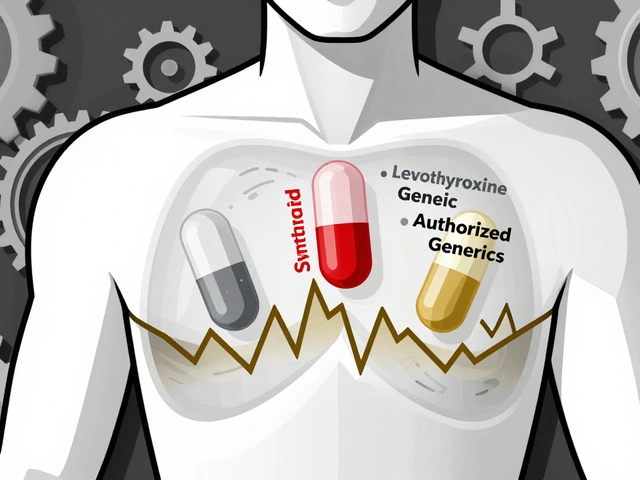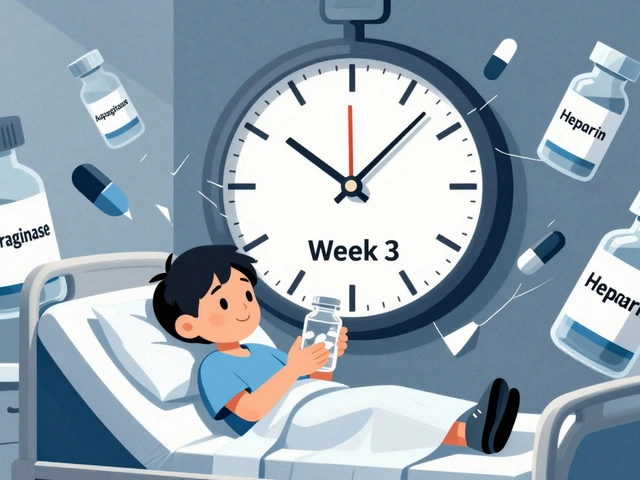Diclofenac side effects
When talking about Diclofenac side effects, the unwanted reactions that can appear after taking the NSAID Diclofenac. Also known as Diclofenac adverse reactions, they often involve the stomach, heart, or liver. Diclofenac, a non‑steroidal anti‑inflammatory drug (NSAID) prescribed for pain and inflammation works by blocking prostaglandin production, which reduces swelling but can also irritate the gastrointestinal (GI) lining. NSAIDs, a drug class that includes ibuprofen, naproxen, and diclofenac share this mechanism, so the side‑effect profile of one often mirrors the others. The most common GI complaints are nausea, abdominal pain, and ulcer formation, while rarer but serious events include bleeding or perforation. Cardiovascular risk, the chance of heart attack, stroke, or hypertension linked to NSAID use rises with higher doses and long‑term therapy, especially in people with existing heart disease. Finally, Liver toxicity, damage to liver cells that can show up as elevated enzymes or jaundice is less common but still worth monitoring, particularly when diclofenac is combined with other hepatotoxic agents.
Key considerations for anyone on diclofenac
Understanding the trade‑off between pain relief and potential harm starts with knowing the main attributes of each side effect. GI issues typically appear within weeks of starting therapy; they’re most severe in people who smoke, drink alcohol, or take steroids. To mitigate this, doctors often prescribe a proton‑pump inhibitor or recommend taking diclofenac with food. Cardiovascular concerns are dose‑dependent: low‑dose regimens (<50 mg daily) carry a smaller risk, while high‑dose or extended‑release forms can double the chance of a heart event. Patients with high blood pressure, high cholesterol, or a history of heart attack should discuss alternatives like acetaminophen or topical NSAIDs. Liver toxicity usually shows up as unexplained fatigue, dark urine, or yellowing of the skin; routine blood tests can catch enzyme elevations before serious damage occurs. If any of these signs appear, stopping the drug and seeking medical advice is the safest move.
Beyond the medical facts, real‑world experience shapes how people manage diclofenac side effects. Many users report that adding a small dose of an antacid or switching to a enteric‑coated formulation eases stomach upset. Others find that timing their dose after a meal dramatically reduces nausea. For heart‑focused worries, regular blood‑pressure checks and a heart‑healthy lifestyle (diet, exercise, quitting smoking) can offset some of the added risk. And when liver health is a concern, limiting alcohol and avoiding other liver‑stressing drugs—like certain antibiotics or statins—helps keep the organ safe. The bottom line is that diclofenac can be an effective pain reliever, but it’s not a free‑for‑all. Knowing what to watch for, how to minimize exposure, and when to seek help turns a potential danger into a manageable part of a treatment plan.
Below you’ll find a curated set of articles that dive deeper into each of these areas—guides on spotting early warning signs, comparisons with other NSAIDs, and practical tips for safe usage. Use them to build a personalized approach that balances relief with safety.

Diclofenac SR vs Other NSAIDs: Detailed Comparison & Alternatives
A thorough side‑by‑side comparison of Diclofenac SR and top NSAID alternatives, covering effectiveness, risks, costs, and best‑use scenarios for informed pain‑management decisions.
read more




